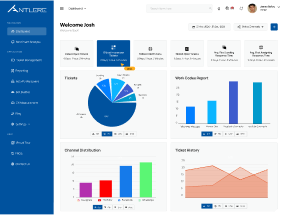Understanding customer sentiment is crucial in today’s competitive and fast-paced market. As businesses strive to meet increasing customer expectations, failing to deliver a standout experience can hurt the bottom line. The emotional connection between a brand and its customers plays a significant role in this process, making it essential to measure how customers truly feel during every interaction with your company.
This article will dive deep into what sentiment analysis is, how it works, and how businesses can use it to elevate customer experiences, boost retention, and drive revenue growth.
What is Customer Sentiment?
Customer sentiment is the result of emotions and attitudes about a business held by its customers. It includes thoughts that touch the spectrum of positive sentiment (satisfied, happy) to negative sentiment (frustrated, angry) and neutral opinions. They are highly telling of customer sentiment and brand impression.
Customer sentiment is, in many ways, an early-warning system. Negative feelings experienced by customers indicate areas of opportunity with your offer or support process. On the other side, positive sentiment means customers are satisfied and interacting with your goods or services. But analyzing consumer sentiment meaning is so much more than numbers — it’s about putting your customers emotional well-being front and center.
What is Sentiment Analysis?
The analysis explains how we can use technology to understand the customer feedback on your products and classify them into categories such as positive, negative, and neutral. Companies generally turn to real-time sentiment analysis tools to cope with massive datasets of customer reviews, survey results, social media posts etc.
To analyze customer sentiment in real-time, which enables businesses to address things as soon as they arise, and ensure to kick the unhappy customers when they are still down, before their dissatisfaction builds-up. Whether it is driving behind-the-scenes insights, things like trend detection, analyzing the tone and context of consumer messages – sentiment analysis can provide you with actionable insights that can help drive strategic decisions.

Sentiment Examples in Action
- Positive Sentiment: “Your app is so smart — I love it!” a customer tweets.
- Negative Sentiment: A review states, “Your delivery process is extremely slow and frustrating.”
- Neutral Sentiment: Feedback like, “The product is okay but could be improved,” indicates room for improvement but no immediate dissatisfaction.
What Type of Information Do Companies Analyze During Sentiment Analysis?
While performing sentiment analysis, businesses analyze different types of customer data, such as:
- Feedback Surveys: Answers to questions such as “How happy are you with our service?
- Social Media Mentions: Tweets, Facebook posts, and Instagram comments referencing your brand.
- Support Tickets – Customer vs support agent conversations to analyze tone and intent.
- Product Reviews: Insights from product ratings and reviews.
- Net Promoter Score (NPS) Surveys: Answers to “How likely are you to recommend us?”
This data gives a well-rounded view of how the customers view a business and it uncovers trends that can be used for actionable sentiment meaning in customer sentiment.
How Can Sentiment Analysis Improve Customer Experience?
Sentiment analysis helps businesses to take targeted steps to deliver an enhanced overall experience by understanding what sentiment reveals about your customers. Here’s how:
- Personalized Assistance: Live sentiment analysis is assisting in customer support ticket triaging so sensitive matters are only handled by expert agents.
- Product Improvements: Customer insights usually point to specific pain points in a product or service, allowing teams to target fixes.
- Better Marketing Strategies: Marketing campaigns that are based on sentiment analysis leveraging data to build campaigns that connect with consumers emotionally.
- Lowered Churn: The earlier you notice and deal with poor customer emotion, the lower the risk of customers heading to competitors.
- Engage Proactively: Brands can engage with squeaky wheels in real time to resolve their issues, thus turning their negative experiences into positive experiences.

What Kind of Data Can Institutions Gather to Improve CX?
Using sentiment analysis, institutions can drive data collection that improves the customer experience (CX):
Common Complaints: Recognizing patterns in grievances, like late delivery or website malfunctions.
Regional Sentiment: Understanding consumers sentiment across the geographies to bucket the services.
Segmented by demographic: Are sentiment different from particular target markets (age groups, genders)?
Feedback on a Specific Product: Getting to know customer perspective on particular product or services.
Benefits and Use Cases of Customer Sentiment Analysis
Customer sentiment analysis has many different applications:
Enhanced Support Efficiency: With real-time sentiment tools, tickets are routed to the appropriate agents to facilitate swift resolutions.
Sentiment Analysis is specifically useful for personalized marketing, which use sentiment examples (attached with positive/negative labels) to create the personal branding campaign that truly resonates with your target audiences.
Product Development: By analyzing sentiment, we identify which product features customers adore or dislike, helping us shape the innovative ideas of the future.
Churn Prevention — Lowering Promoter Negative Sentiment is a Forward-Looking Behavior — Loyalty
Agent Training — Identifying unattractive language or behaviors helps to train the agents for better communication.
So, for example, a fashion retailer may find out through sentiment analysis marketing that its eco-initiatives delight younger customers but are considered too costly by older patrons. That makes it easier for the retailer to tailor messaging to each demographic.
Real-World Impact: How Sentiment Analysis Drives CX Innovation
With businesses trending towards creating immersive CX, you need to build relationships by understanding customer sentiment. Consumers today expect more personalized, conversational interactions, and sentiment data can help empower organizations to meet that expectation.
Sentiment analysis is not limited to support teams; it impacts marketing, product, and strategy too. Real time sentiment allows companies to identify changes in the perception of the public and take action by responding.

Final Thoughts: Putting Customer Sentiment Data to Work
Monitoring customer sentiment is just the start. In order to make a difference, organizations need to transform this data into usable information. Look at it over time, break it down by attributes of your customer base and lay the complaint on top of the other complaints you already have.
Customer sentiment analysis is one way for companies to get a leg up on providing experiences that build loyalty and sustainable success. Learning what sentiment analysis is in today’s customer-driven world is no longer optional—it is the only way to survive.
Understanding what sentiment analysis is no longer optional—it’s the key to thriving in today’s customer-driven world.










